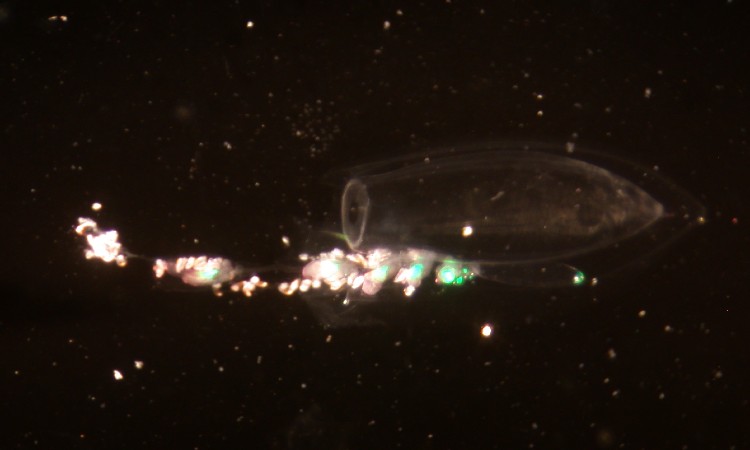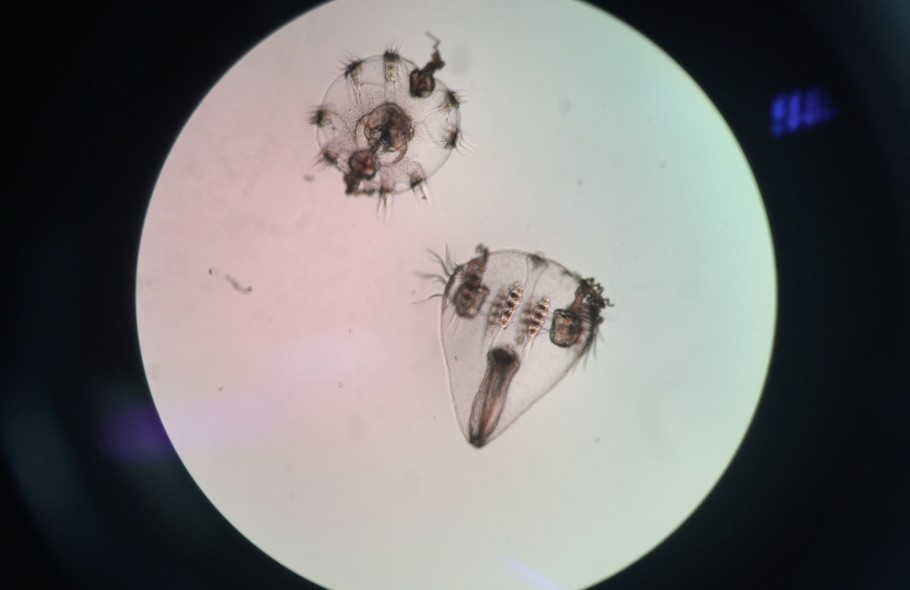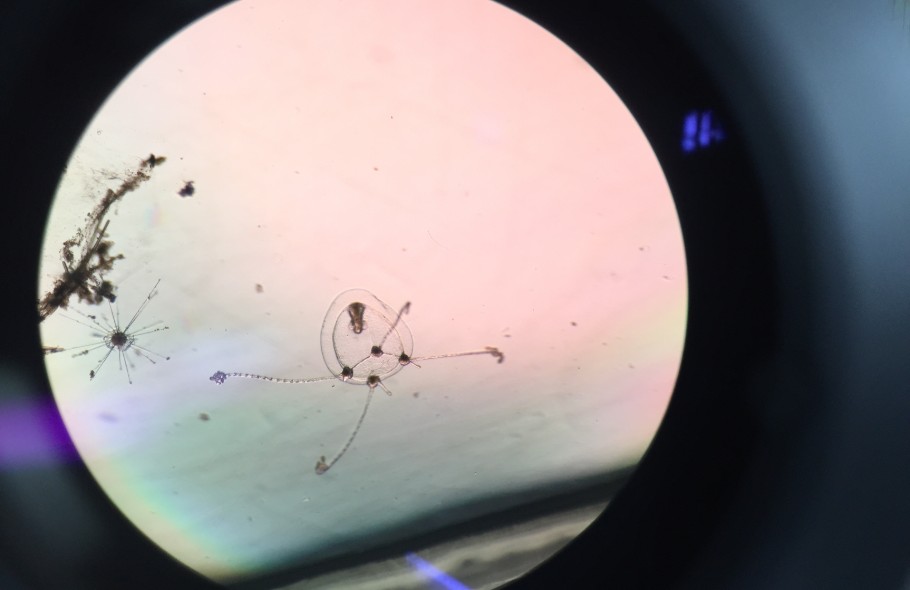
Photo credit: L.Gershwin

Planktonic life of the Sunshine Coast
Investigating the impacts of climate change on the microscopic life of our waterways
Between 2015 and 2022 Council worked with experts from CSIRO and Griffith University to identify, quantify and record the jellyfish species that reside in our waterways over the summer months - from November to March.
The surveys were undertaken to establish a picture of the “normal” microscopic jellyfish that live here. Once there was a better understanding of what our plankton communities looked like, we will be better able to investigate any changes that may be happening to that community associated with the variations of climate change.
Plankton and in particular jellyfish are the building blocks of our oceans. All manner of animals feed on plankton, from small juvenile fish found in our estuaries here, to some of the largest animals in the ocean – humpback whales. Plankton is also a good indicator of waterway health and the make-up of the community can tell us a lot about the water quality and ecosystem resilience.
The summer oceanic upwelling's brings species such as the clapper jellies into our inshore waters. The clapper jelly ( _Ocyropsis_ sp.) is a ctenophore that moves in an unusual way. When disturbed, the jelly swims away rapidly by clapping its lobes together ( see video). Clapper jellies are also bioluminescent – they can produce their own blue or green light which flashes along its comb rows to scare away predators.
There are multiple factors influencing what jellies we see when. For example in November to December when ocean temperatures have not reached their peak we usually see a lot of Button jellies ( Eirene sp.) and Comb jellies or ctenohpores ( Pukia sp.). Then as the ocean temperatures warm up and oceanic upwellings arrive in January and February, we generally notice a shift in the community with increased species diversity.
Some of the interesting species we have found include Liriope a bell shaped oceanic traveller, the stinging siphonphore similar to a blue bottle but much smaller Nanomia and the always entertaining Bullet jellies ( Muggiaea) which have one long tentacle that they use to propel themselves in the water like a bullet. During March we see a return to our estuarine community, but this time usually dominated by the immortal jellyfish Turritopsis sp. (they revert back to the polyp stage in their lifecycle), the ball shaped hydrozoan Bougainvillia and the green five spot jellyfish Obelia.
Pukia

Juv Bougainvillea

You may also be interested in
Coastal
Coastal areas extend from our coastal plains and lagoons to our sand dunes and rocky shores.
Climate change
We’re addressing climate change in a progressive and responsive way.
Biodiversity
Biodiversity is the variety of all life plants, animals, fungi and microorganisms.